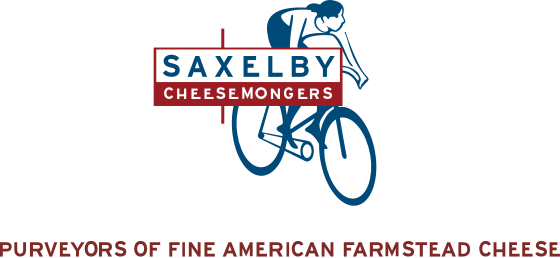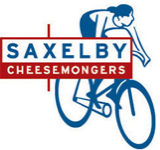If you’ve driven through the country in the summertime, chances are you’ve seen tractors out mowing fields, leaving neat and tidy windrows of hay in their wake. Or maybe you’ve seen the hay rolled up into massive snail-like round bales that dot the landscape like wisened ancient monoliths. You probably didn’t give it a second thought… Making hay is something that just happens on the farm each year, a necessary, if arduous, annual event like paying taxes or doing spring cleaning in your house. It’s a deceptively simple agrarian scene… Bluebird skies, farmer makes hay, cows and other animals eat hay, end of story. Right?
On the contrary! The yearly battle to make hay is one of the greatest, most complex, and most unsung rituals in the virtuous cycle of making grass fed artisan cheese. For Ellie Searles, the cropping manager at Jasper Hill Farm, making the best hay possible for their herd of roughly 300 cows is her raison d’etre, and for a few weeks each summer is a round-the-clock marathon of mowing, tetting, raking, baling, and drying that has lasting consequences on the quality of that year’s cheese.
Ellie grew up in Vermont’s remote and beautiful northeast kingdom, where Jasper Hill Farm and quite a few other awesome small-scale artisan food businesses with an outsize impact are located (Hill Farmstead Brewery, High Mowing Seed Company, Barr Hill Gin, etc). She studied at UVM and designed her own major – a blend of sustainability, animal husbandry, and soil science. After graduating, Ellie worked for Jack Glaser, a pioneer of the grass-fed dairy movement, at his organic Jersey dairy, Butterworks Farm in Westfield, Vermont.
Grass fed milk is better for making artisan cheese, better for our bodies, and better for the planet too. Cows, mythical ruminants that they are (ruminant is the term for an animal that subsists on grass and comes from the Latin word ‘ruminare’ which means ‘to chew over again’), thrive on a diet of fresh pasture and dried hay supplemented with just a hint of grain, which is a carbohydrate-filled energy boost. Their sophisticated digestive system begins with a four-chambered stomach, the first of which is the rumen – essentially a giant fermentation tank meant to break down tough and fibrous grass and convert it to nutrients that power their giant bodies. The microbiological profile of both the rumen and the milk are at their optimal state when the cow is eating grass.
For us humans, studies have shown that the balance of Omega 6 and Omega 3 fatty acids as well as the presence of CLA (Conjugated Linoleic Acid) in grass fed milk and cheese are beneficial for human health, reducing the risk of heart disease, improving lung and eye function, boosting metabolism and reducing inflammation. We are what we eat eats – and if cows are eating grass, which is good for them, they make milk that is better for us too!

Grass fed dairy also has myriad benefits for the planet. Farming croplands using regenerative methods like the ones used by Ellie and her team at Jasper Hill help to build topsoil, sequester carbon, improve water quality, and foster biodiversity both below the soil and above. Ellie and her team embrace ‘no till’ farming, which means the pastures aren’t plowed and re-seeded each year. Plowing releases carbon trapped in the soil into the atmosphere and disturbs the delicate web of life that includes insects, worms, and mycorrhizal fungi, among billions of other organisms. No-till farming minimizes soil compaction which lets the all-important earthworms do their jobs, and increases permeability, which allows the land to absorb more water and be resistant to erosion. They apply organic fertilizer (i.e. manure… which they have in abundance!) to build soil fertility, and seed the fields with a hint of legumes after the first cut of hay, but otherwise get out of the way and let Mother Nature handle the rest.
Dr. Zach Bush, a physician turned agriculture and climate change activist, and other experts state that if we could increase the carbon content of agricultural soils by just .4% globally, we could reverse the effects of climate change. In farms that practice regenerative agriculture (and grass based dairy farming definitely falls under that category) researchers have predicted that in 5-10 years the amount of carbon in soils could be increased from 1% to 4%... that’s not a .4% increase, rather it’s a 400% increase!
The Northeast Kingdom of Vermont is a sub arctic zone; the growing season is short and oftentimes rainy. This makes putting up enough dry hay to feed the cows year-round a daunting challenge. Ellie manages a patchwork of hayfields (over 40 in all) that span over 900 acres, and a team of five people. Each field is its own idiosyncratic ecosystem with a different elevation, orientation to the sun, and soil signature. Come summertime, in order to plan the season’s cropping, she has to watch the weather forecast, know how wet the ground is, which can impede the tractors’ ability to get onto the land in the first place, and look at the maturity of the grasses and other species in order to reap the highest nutritional value per acre.
Over the course of one growing season, Ellie and her team bank on making three ‘cuts’ of hay – one in the early summer, one in mid-summer, and one in the late summer. Some years they can sneak in a fourth cut in September or October if the weather is auspicious, but the first and fourth cuts are always the most difficult because the weather is less predictable than in the bluebird days of July and August, when the soil is drier, and the weather is generally warmer and sunnier.
The first and second cuts of hay are the most important. First cut hay is typically more fibrous. It is full of tougher, stalkier, more mature grass as opposed to soft, tender legumes like clover and alfalfa. Making first cut hay early in the season when the grass is still in its vegetative state (i.e. hasn’t gone to seed) is better for milk production and more digestible for the cows. Second cut hay tends to be greener, and finer in texture. It is full of tender leaves and flowers, smells sweeter, and is higher in protein and calories. In a blind taste test, cows generally prefer second cut hay to first cut, but they need the fiber from the first cut hay in order to ensure their digestive tract remains in balance.
Each ‘cut’ of hay is a herculean undertaking that involves multiple days, multiple steps, and much sweat and furrowing of brows on the part of the haymakers. First the hay has to be mown; the tractors pass over the fields and gather the hay into neat and tidy windrows. Then the hay has to be tetted; tetting is basically fluffing the hay with circular wire ‘fingers’ in order to encourage air flow and remove moisture so the hay does not ferment after it is baled. Then it is tetted a second time (and sometimes even a third time!) before Ellie deems it ready to be raked and baled. All the while the farmer looks at the weather, rubbing their lucky rabbit’s foot, crossing their fingers, praying to God (or some combination of these things) for no rain.
If it does rain, and the hay gets wet, it ferments after it is baled and becomes haylage. Feeding cows haylage is fine if the dairy farmer is producing fluid milk, but it is not ideal for cheesemaking because the microbes present in haylage can be a source of unwanted microbes in the milk that can lead to defects in the cheese further on down the line. Jasper Hill Farm feeds their cows 100% dry hay, which has a great impact on their cows and the quality of their cheese.
When it comes to capricious weather, which the northeast kingdom is notorious for, Jasper Hill Farm has a valuable tool in its arsenal – the Calderwood Cropping Center. The first hay-drying machine of its kind in the United States, the Cropping Center can dry 500-pound bales of hay in a matter of a few hours, whereas it can take 3-4 days to dry in a sunny field. Jasper Hill Farm's founders, Andy and Mateo Kehler, observed a hay dryer in action in Parma Italy, a region whose local cheese (Parmigiano-Reggiano) calls for grass-fed milk, but whose climate is too wet for making consistent, high-quality dry hay, and were inspired to bring the Italian technology stateside.

Some years (like 2021) are warm, mild, and generally good for making hay, and the cropping center is used sparingly, if at all. But in especially rainy years (and there have been many in the course of Jasper Hill’s 18 year history!) having the ability to dry hay with the cropping center allows Ellie and her team to bank enough hay to feed their cows according to their own high standards all year long.
So, the next time you drive through the bucolic countryside, consider the careful planning, sweat, and hours of labor behind each of those haybales… And when you taste a piece of grass fed cheese, savor the nuance and flavor as your taste buds close the loop between sunshine, pasture, cow, cheesemaker, cave, and your dinner table.
Shop Calderwood, our exclusive grass-fed, hay-ripened cheese from Jasper Hill Farm, and our entire selection of grass-fed cheese.

